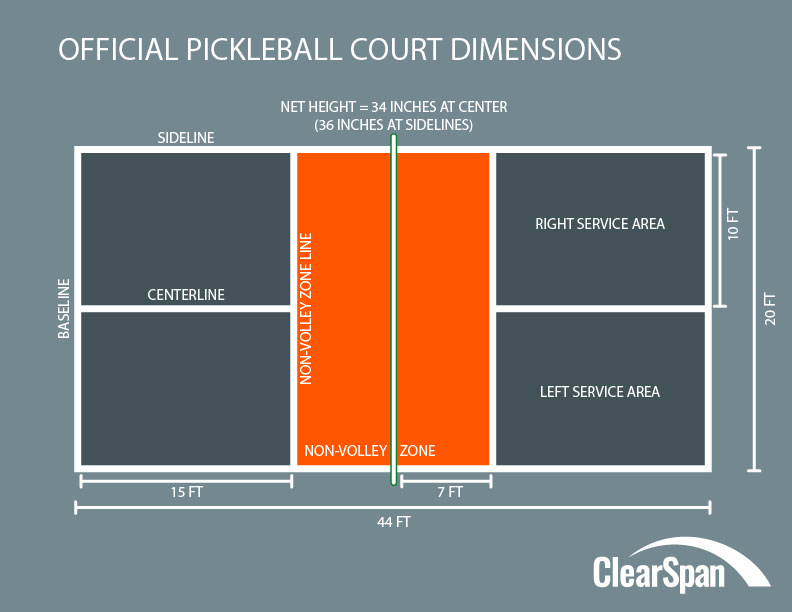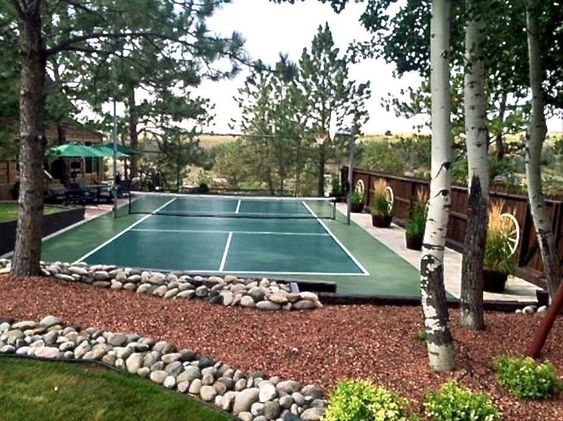Secret Variables in the Building And Construction of Pickleball Courts: From Website Choice to Last Surfaces
The building of pickleball courts incorporates a range of crucial aspects, starting with the option of an appropriate site that balances availability with ecological factors to consider. Essential elements such as court dimensions, surface materials, and drainage systems considerably affect not just the quality of play but also the durability of the facility.
Site Selection Criteria
When starting the building and construction of pickleball courts, it is vital to toenail down the website selection requirements that will certainly make certain optimum playability and accessibility. The location must be easily obtainable for gamers, preferably located near domestic areas or neighborhood facilities, to motivate engagement.
Additionally, the surface needs to be degree and stable, as uneven ground can lead to safety and security threats and impact gameplay. Sufficient drainage is additionally essential; choosing a site with good water drainage will certainly help maintain court problems during adverse climate.
One more vital factor to consider is the accessibility of utilities. Accessibility to power and water is needed for lighting and upkeep functions. Additionally, closeness to parking centers is important, facilitating simple access for gamers and spectators alike.
Ecological factors can not be neglected; all-natural shade from trees can boost player convenience, while exposure to dominating winds may interrupt play. Last but not least, zoning laws and neighborhood assistance ought to be taken into consideration to guarantee that the job aligns with regional standards and receives the support it requires for successful application. By very carefully reviewing these criteria, stakeholders can produce a welcoming and useful environment for pickleball lovers.
Court Dimensions and Format
To ensure optimal gameplay and adherence to policies, the measurements and design of pickleball courts have to be carefully defined. A typical pickleball court determines 20 feet in size and 44 feet in size for both songs and increases play. The suggested format consists of a non-volley area, commonly described as the "cooking area," expanding 7 feet from the web on either side. This location is crucial, as it influences gamer positioning and shot choice - Illinois and midwest.
The internet height is set at 36 inches at the sidelines and 34 inches at the center, creating a mild dip that influences round trajectory. Court markings are just as vital; lines must be 2 inches large and unique in color to ensure visibility.
Additionally, a barrier area surrounding the court is recommended, usually extending 5 to 10 feet beyond the sidelines and standards to fit players' movements and boost safety and security. Appropriate layout and measurements not just guarantee compliance with main guidelines but additionally improve the general playing experience, suiting both leisure and competitive play. Mindful planning in these locations is vital to the successful building and construction of pickleball courts.
Surface Material Options
Picking the right surface area material for pickleball courts is important for making certain ideal player efficiency and security. The option of surface area can significantly affect gameplay, consisting of sphere bounce, grip, and player convenience.
There are a number of alternatives offered, each with its distinct characteristics. Asphalt is a preferred choice as a result of its resilience and reduced maintenance needs. It offers a strong playing surface area that can stand up to various weather problems yet might call for periodic resurfacing.
Concrete is an additional commonly utilized material, using outstanding long life and a smooth finish. It enables for regular round bounce but can be difficult on gamers' joints, making it less desirable for long-lasting play without correct cushioning.
For those seeking improved convenience and shock absorption, supported acrylic surface areas present a practical choice. These surface areas combine a base layer with an acrylic topcoat, supplying boosted grip and a softer feeling, which is helpful for reducing the risk of injuries.
Finally, synthetic grass is obtaining grip, particularly for multi-purpose facilities. Its convenience and lower maintenance needs make it an appealing choice, though it might not supply the very same round feedback as conventional tough courts. Mindful factor to consider of these options will ensure an optimal playing environment.
Drainage and Lighting Factors To Consider
Proper water drainage and reliable lights are essential parts in the building and construction of pickleball courts, significantly affecting both playability and safety and security. Adequate drainage systems prevent water accumulation, which can bring about additional hints unsafe surface areas and damage to the court structure. A properly designed water drainage strategy integrates sloped surface areas and suitable materials to promote water stream away from the playing area - Illinois and midwest. This not just protects the stability of the court but likewise reduces downtime due to inadequate climate condition.
Lighting is just as crucial, specifically for courts intended for evening usage. Proper lighting improves presence, ensuring that players can see the round clearly and decreasing the threat of crashes. The placement of illumination fixtures must be purposefully planned to get rid of darkness and give even distribution of light across the court. LED lights are suggested for their power performance and longevity, providing intense lighting you can try this out while reducing operational costs.

Last Coatings and Maintenance
After dealing with water drainage and lighting considerations, interest turns to the final surfaces and continuous maintenance of pickleball courts. Illinois and midwest. The option of surface material is important, as it impacts both playability and toughness. Usual choices include acrylic finishings and specialized sports surfaces that provide optimum traction and padding. These finishes ought to be applied in multiple layers to make certain strength versus weather condition aspects and wear.

Seasonal upkeep might include resurfacing every couple of years, relying on usage and environmental variables. Appropriately maintaining internet, court lines, and bordering areas is similarly vital to provide a risk-free and delightful playing experience. By buying top quality surfaces and sticking to a structured maintenance routine, center owners can ensure their pickleball courts stay in superb condition for many years to find.
Conclusion
In final thought, the effective building and construction of pickleball courts rests on meticulous interest to a number of crucial variables. Website selection ought to focus on accessibility and terrain stability, while court dimensions and design should follow ideal criteria for gameplay. The selection of surface area product significantly affects gamer safety and performance. Effective water drainage and ample lights add to court long life and presence. High quality surfaces and a robust check these guys out upkeep timetable are necessary for protecting the court's condition, enhancing the overall experience for gamers and viewers alike.